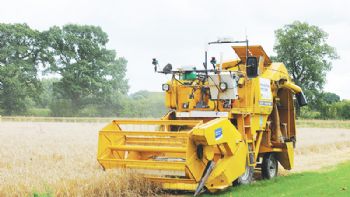
Researchers in Shropshire have managed to sow and harvest a field of barley using nothing but robots — and without anyone setting foot inside the field.
The ‘Hands-free Hectare’ project was set up last October by a team from Harper Adams University (
www.harper-adams.ac.uk), using £200,000 of Government funding to modify a tractor and a combine harvester with cameras, lasers and GPS systems, while drones and a robot ‘scout’ (the latter scooped up and carried soil samples) helped the group to monitor the field.
Project leader (and agricultural engineer) Kit Franklin admits that it was “the most expensive hectare of barley ever, but we’re at a stage where farm machinery has got to unsustainable sizes.
“Smaller, smarter vehicles are the future, as they can work with greater precision and reduce harmful soil compaction.”
The Hands-free Hectare project, while successful, was not without its challenges. The tractor failed to keep to a straight line in the field, so some of the crops were sown in crooked strips.
After drilling and rolling the crop, the team also struggled to quickly re-purpose the tractor for spraying.
Despite the project’s relative success, Kieran Walsh (the team’s agronomist) says there is a certain something — an ability to “read” the land — that is unique to farmers.
“Until a machine can replicate those observational skills, there will be a need for humans to pull on their boots and get down in the dirt every so often.”